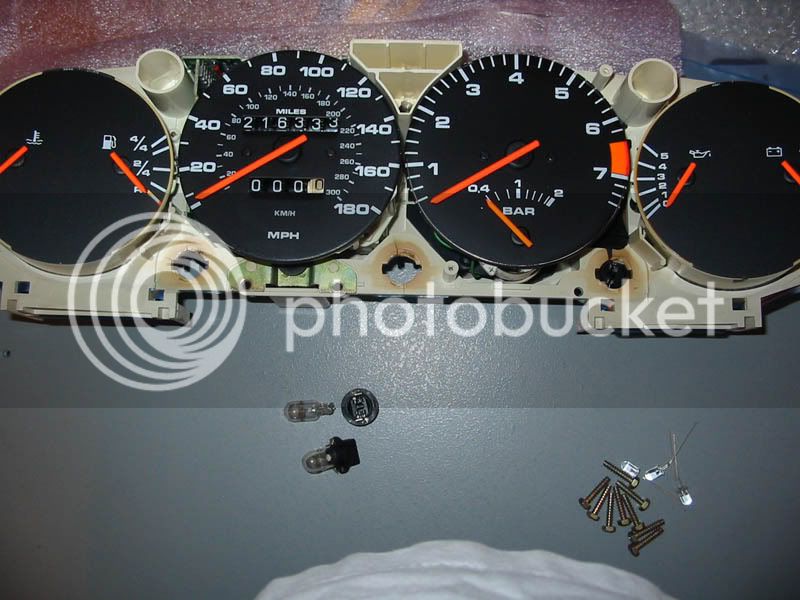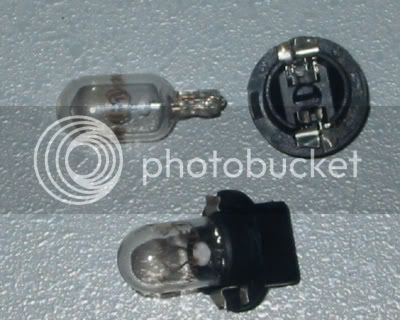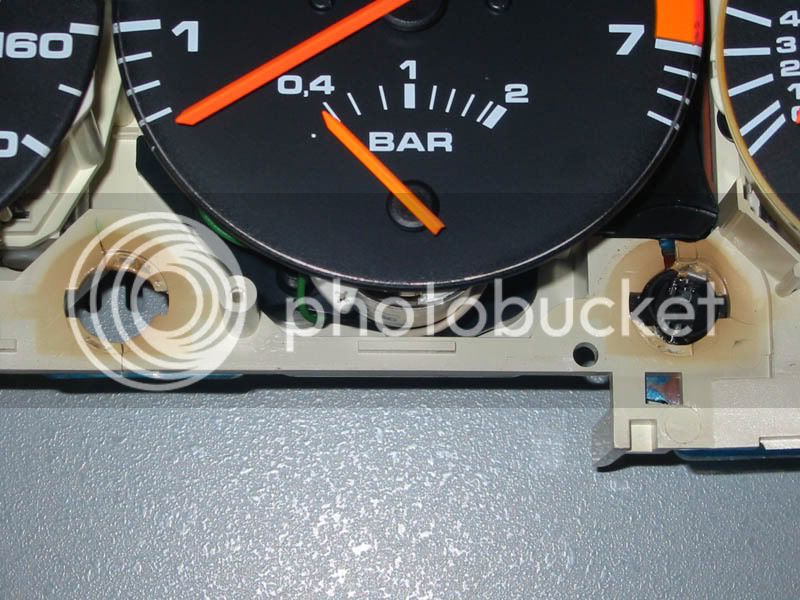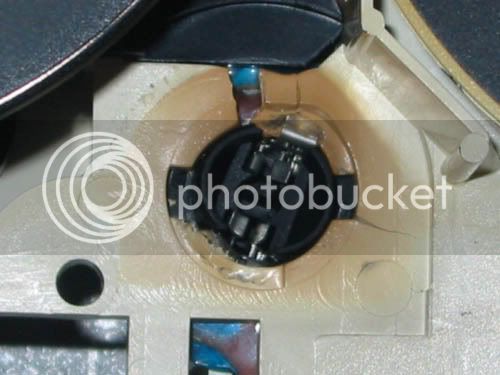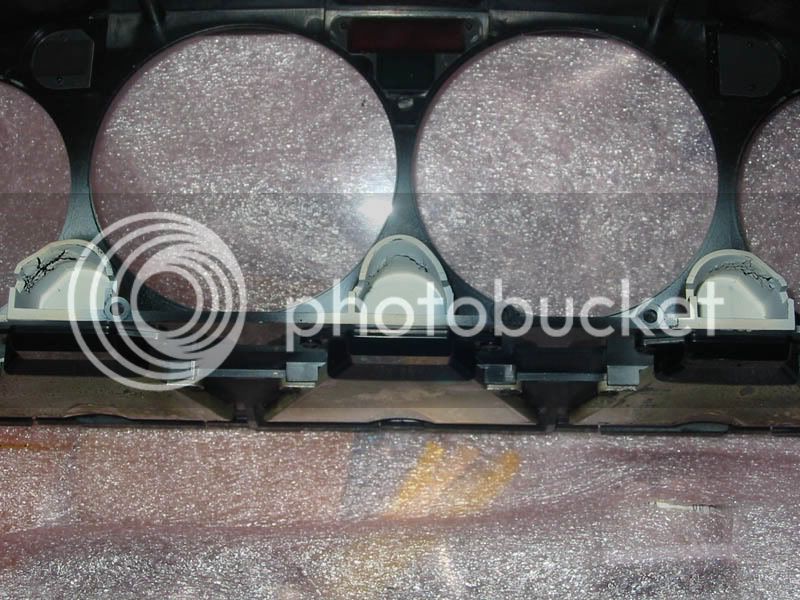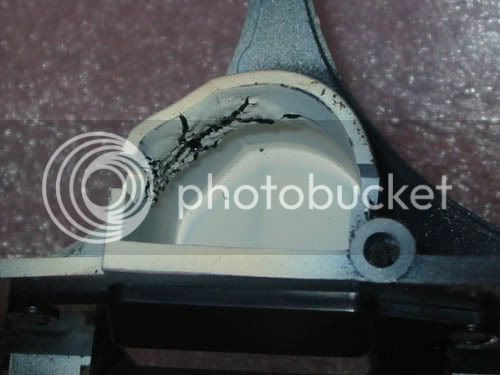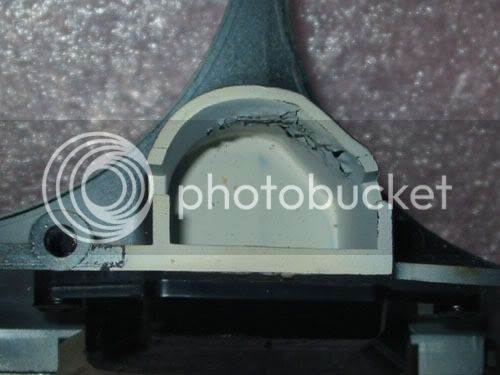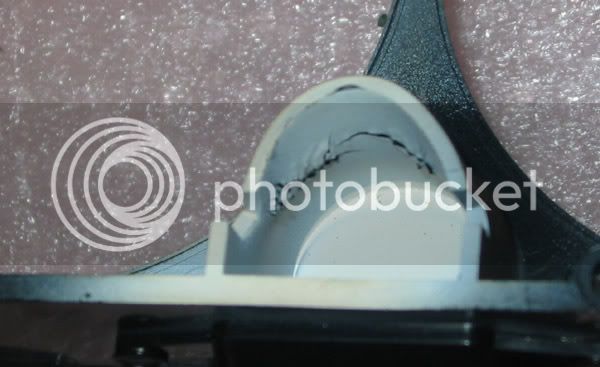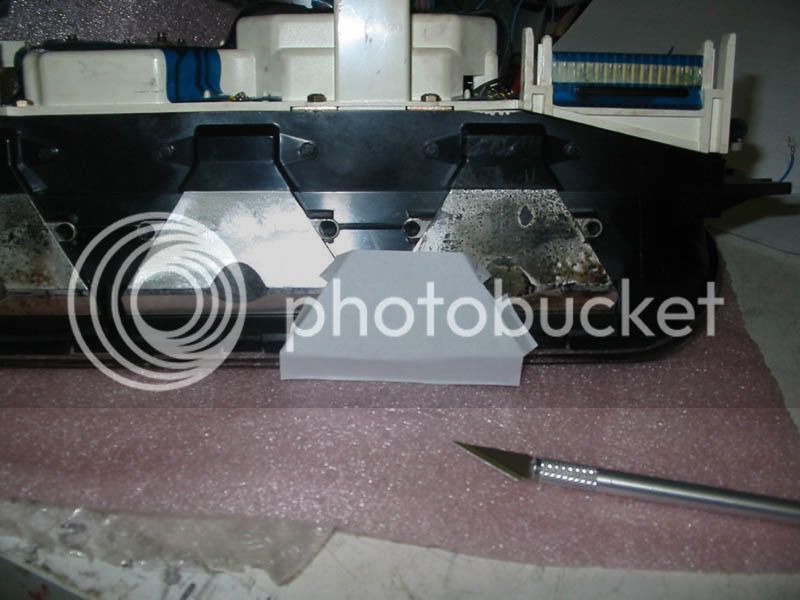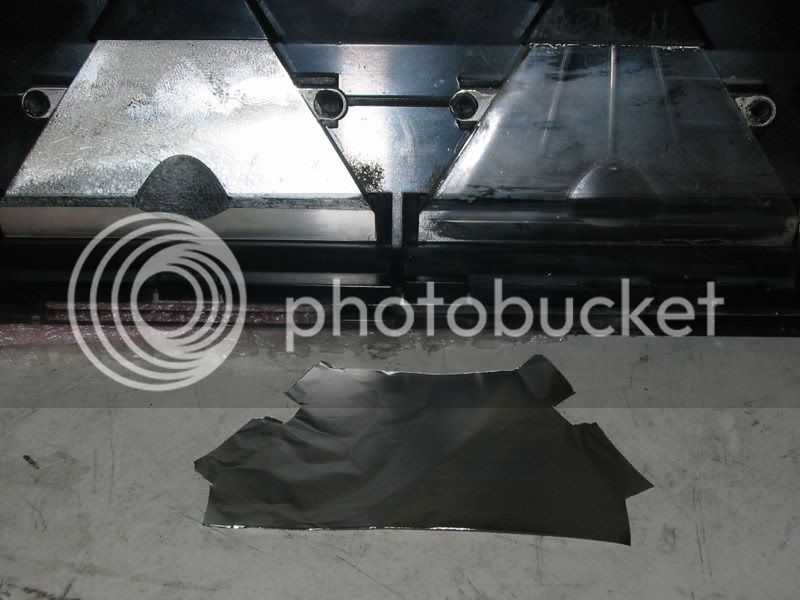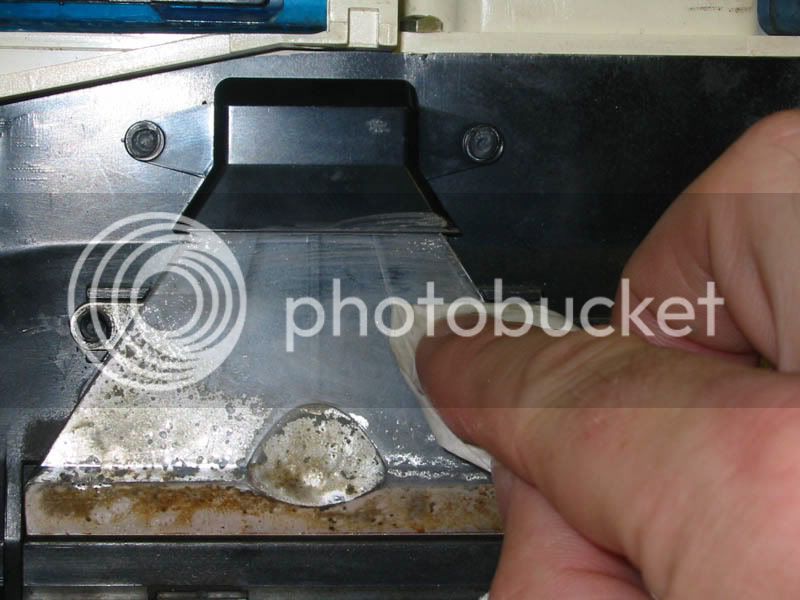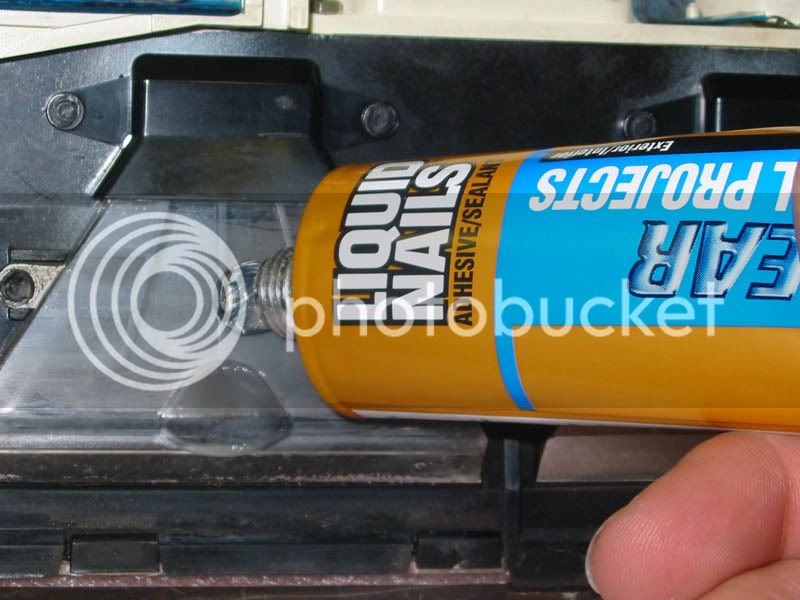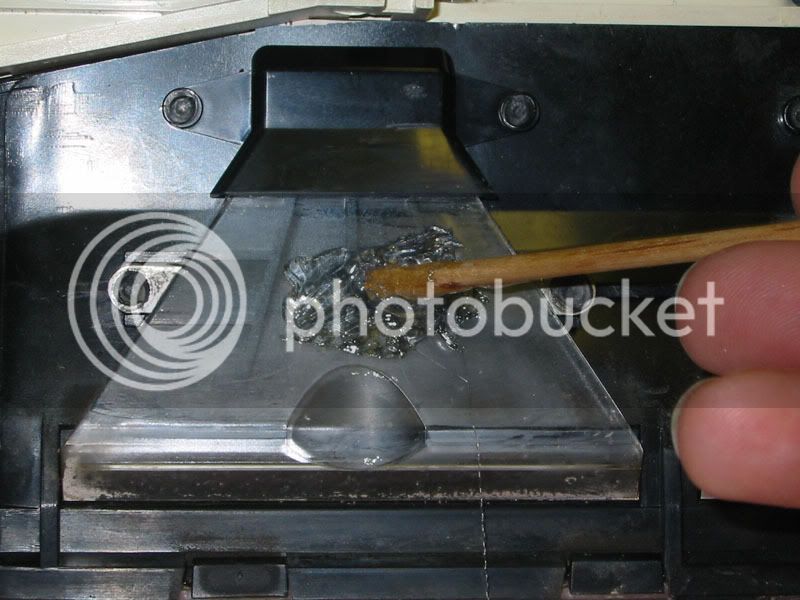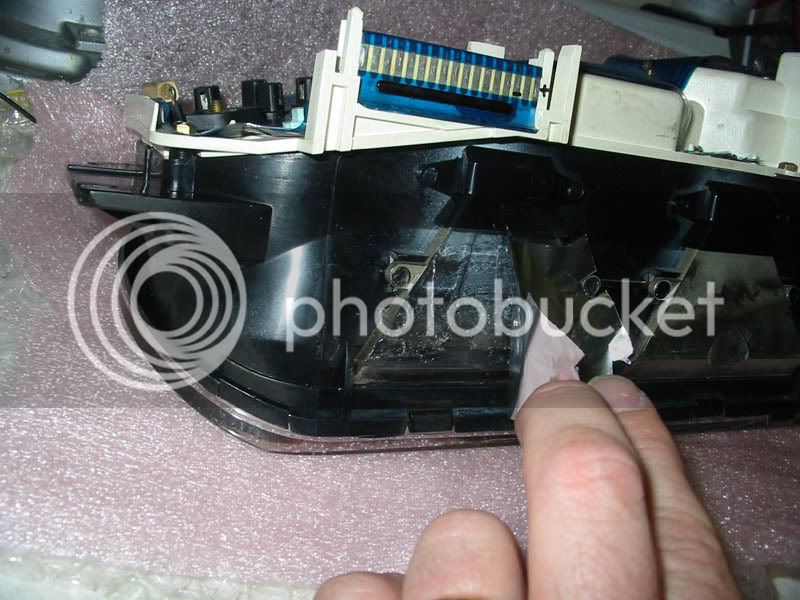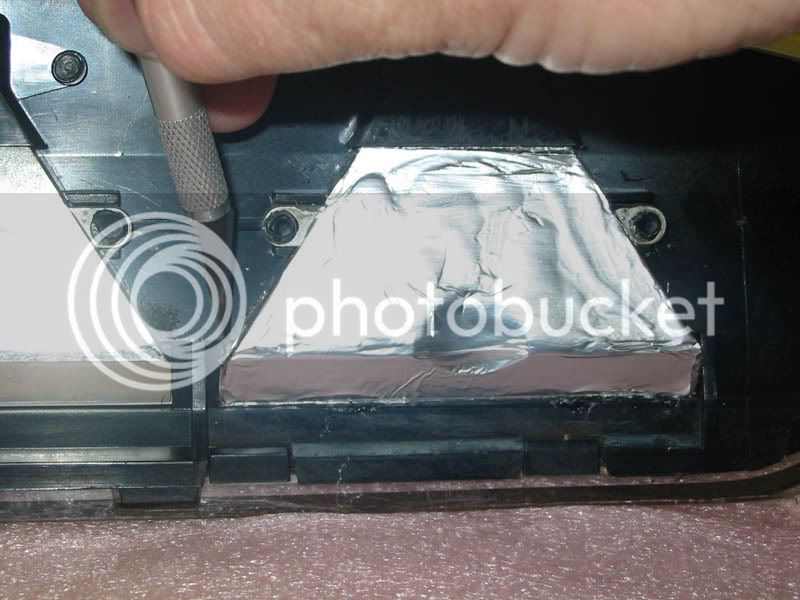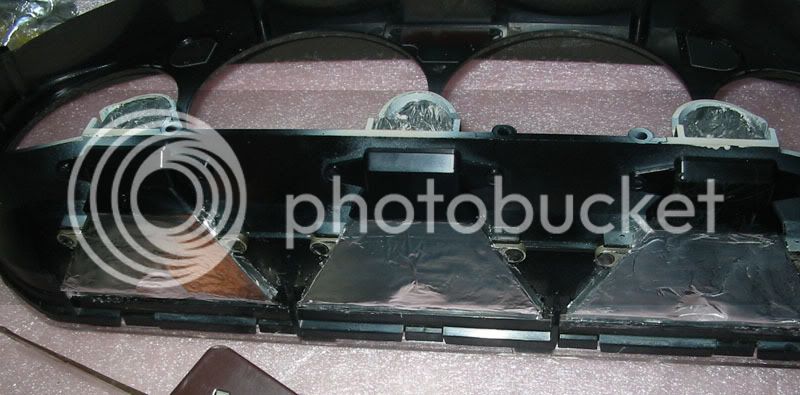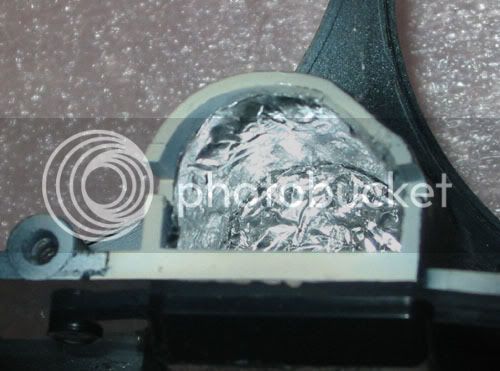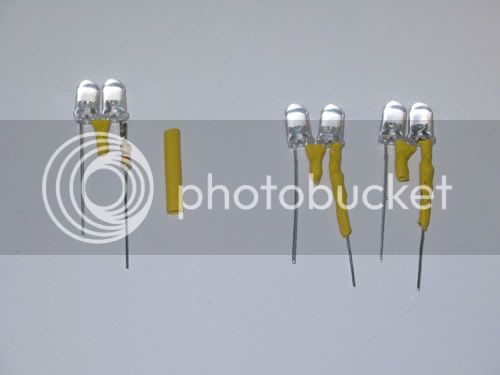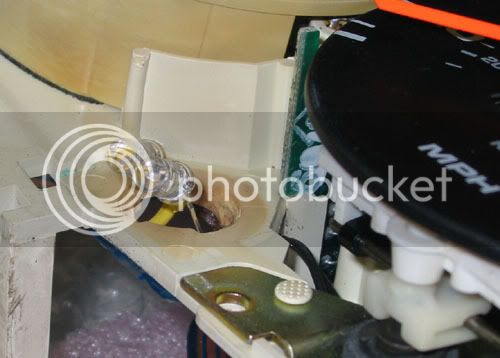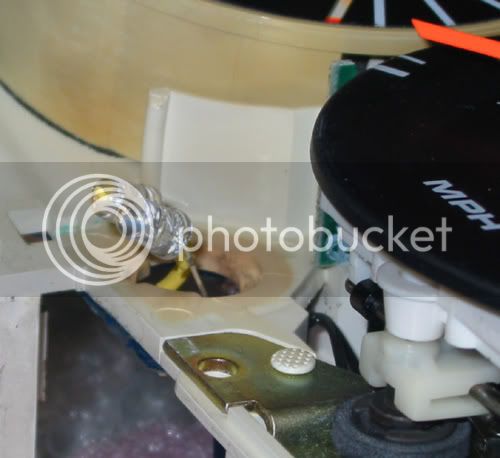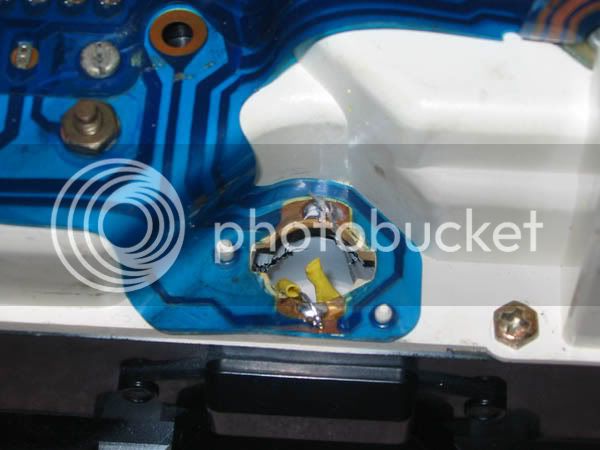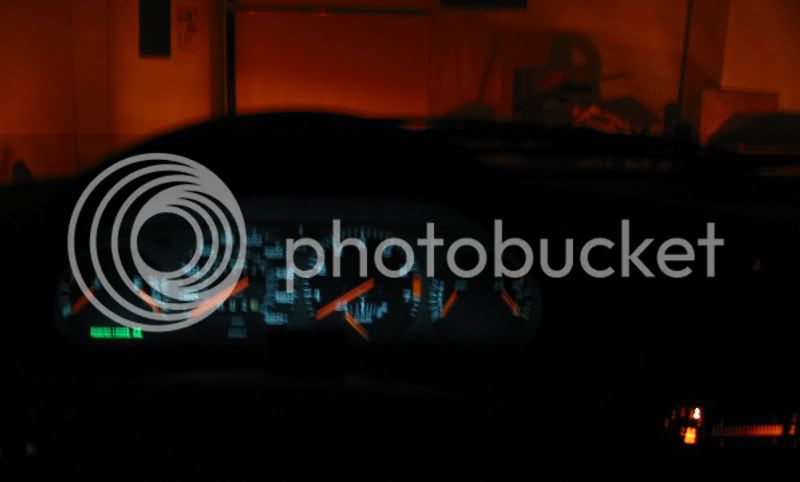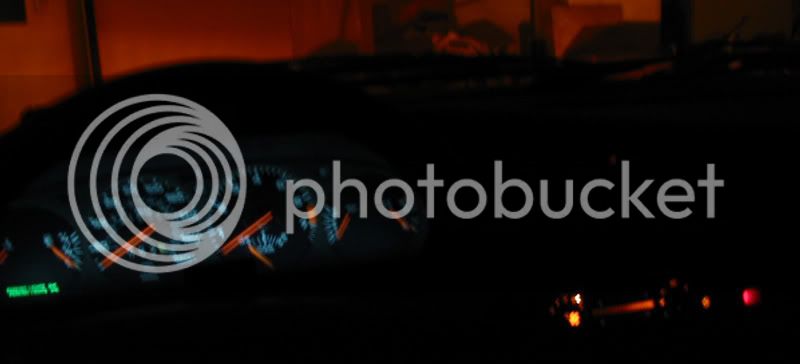SSLtech
Well-known member
So the instrumentation illumination on one of my cars is lamentable. -Not just mine: it's a well-documentad design flaw in that model... -LOTS of complaints from owners.
There are three 3-Watt bulbs in parallel, which shine down optic 'tunnels' and bounce back off the end to "hopefully" forelight the speedo, tacho, etc.
What happens is this: the 'silver' reflective coating on the light tunnels oxidises, and the illumination becomes very dim. Getting the dashboard apart is a pain in the a$$, so people tend to 'shotgun' the bulbs when one goes out, and they invariably put larger-wattage bulbs in there, to help with the dim illumination issue.
Over time, the three 5-watt bulbs which you ALWAYS find in there heat up and melt the bulb bases.
..So I replaced the bulbs with white LEDs (three clusters of four, in series pairs with two resistors per cluster), removed the silver with non-acetone nail-polish remover, re-silvered the tunnels with aluminium foil (shiny-side in!) and clear construction adhesive, then sealed the job with packing tape.
Result? -FABULOUS illumination! nice clear visibility (at times you couldn't even READ the two outer (voltage and temperature) gauges using the old incandescent bulbs. In addition, they now run cooler and won't melt the plastic (which the steady escalation of bulb wattage had begun to do!)
However...
Now that the current drain has been reduced from a couple of amps (three 5-watt bulbs for the cluster, plus all the other dash panel backlighting on the climate control, vent lights, etc. makes about 25 watts in total: 2A or so at 12V) down to a matter of a few milliamps, the dimmer (which is just a ~5-ohm -cold resistance- wirewound rheostat wired in series with the hot line of the illumination feed), the dimmer does absolutely nothing.
Not a massive deal, but there will likely be times when the light may be irritating and I'd like to dial it down a bit, whereas around twilight, I usually like to have the illumination set full-on, because it's quite 'shadowey' under the instrument panel 'shade', and my pupils are still often shrunk-down because of the sunlight at horizon level...
I COULD take a 5-ohm ceramic resistor and wire it in parallel with the dash lights, thus restoring the voltage drop at the wirewound rheostat, but that makes more heat and challenges my low-power ethics massively!
So, I'm trying to imagine a circuit which takes the 0~5 ohm (approx.) rheostat out of circuit, and somehow uses that to generate a voltage from about 5 to 13 volts or so... I can picture it using an op-amp and an emitter follower, but I wondered if there's not something simpler and more elegant, without resorting to op-ampery...
By the way, this is apparently a very common complaint, leading to the myth being spread around automotive fora that "LEDs can't be dimmed"...
Even my neighbour -who has a '65 Mustang convertible- when I told him that I was fed up and going to put LEDs in the dash illumination of my car, asked me "So, you presumably about the issue not being able to dim them?"
I'd love to prove them wrong! :wink:
Keith
There are three 3-Watt bulbs in parallel, which shine down optic 'tunnels' and bounce back off the end to "hopefully" forelight the speedo, tacho, etc.
What happens is this: the 'silver' reflective coating on the light tunnels oxidises, and the illumination becomes very dim. Getting the dashboard apart is a pain in the a$$, so people tend to 'shotgun' the bulbs when one goes out, and they invariably put larger-wattage bulbs in there, to help with the dim illumination issue.
Over time, the three 5-watt bulbs which you ALWAYS find in there heat up and melt the bulb bases.
..So I replaced the bulbs with white LEDs (three clusters of four, in series pairs with two resistors per cluster), removed the silver with non-acetone nail-polish remover, re-silvered the tunnels with aluminium foil (shiny-side in!) and clear construction adhesive, then sealed the job with packing tape.
Result? -FABULOUS illumination! nice clear visibility (at times you couldn't even READ the two outer (voltage and temperature) gauges using the old incandescent bulbs. In addition, they now run cooler and won't melt the plastic (which the steady escalation of bulb wattage had begun to do!)
However...
Now that the current drain has been reduced from a couple of amps (three 5-watt bulbs for the cluster, plus all the other dash panel backlighting on the climate control, vent lights, etc. makes about 25 watts in total: 2A or so at 12V) down to a matter of a few milliamps, the dimmer (which is just a ~5-ohm -cold resistance- wirewound rheostat wired in series with the hot line of the illumination feed), the dimmer does absolutely nothing.
Not a massive deal, but there will likely be times when the light may be irritating and I'd like to dial it down a bit, whereas around twilight, I usually like to have the illumination set full-on, because it's quite 'shadowey' under the instrument panel 'shade', and my pupils are still often shrunk-down because of the sunlight at horizon level...
I COULD take a 5-ohm ceramic resistor and wire it in parallel with the dash lights, thus restoring the voltage drop at the wirewound rheostat, but that makes more heat and challenges my low-power ethics massively!
So, I'm trying to imagine a circuit which takes the 0~5 ohm (approx.) rheostat out of circuit, and somehow uses that to generate a voltage from about 5 to 13 volts or so... I can picture it using an op-amp and an emitter follower, but I wondered if there's not something simpler and more elegant, without resorting to op-ampery...
By the way, this is apparently a very common complaint, leading to the myth being spread around automotive fora that "LEDs can't be dimmed"...
Even my neighbour -who has a '65 Mustang convertible- when I told him that I was fed up and going to put LEDs in the dash illumination of my car, asked me "So, you presumably about the issue not being able to dim them?"
I'd love to prove them wrong! :wink:
Keith





